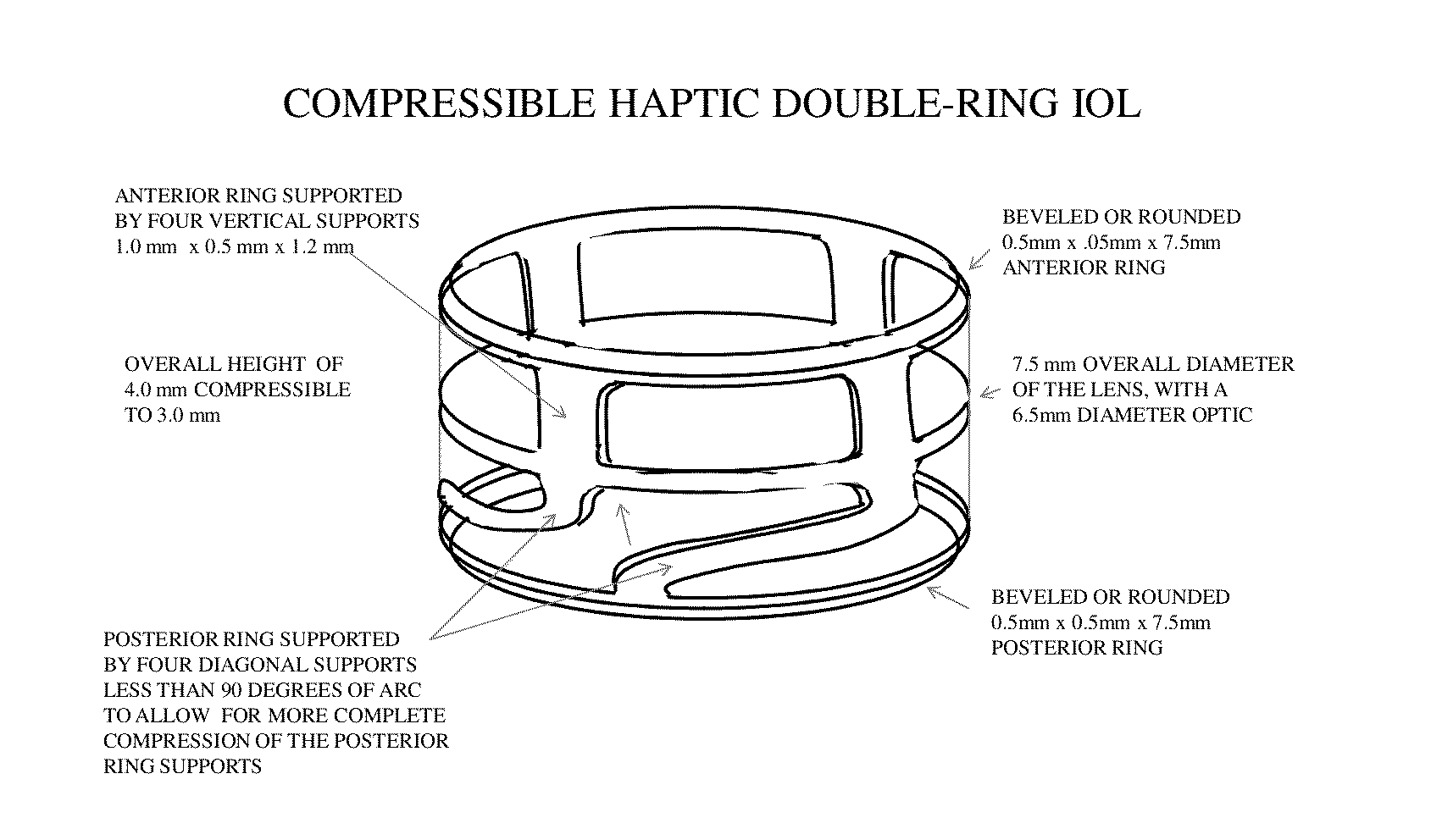Intraocular lens rings
a technology of intraocular lens and ring, which is applied in the field of intraocular lens and haptic devise, can solve the problems of increasing the risk of detachment of the retina, and undue stress on the zonules and the ciliary body, so as to achieve long-lasting fit and function, increase the circumference, and suit the patient's visual acuity. consistent
- Summary
- Abstract
- Description
- Claims
- Application Information
AI Technical Summary
Benefits of technology
Problems solved by technology
Method used
Image
Examples
examples
[0033]FIG. 1 depicts one embodiment of the lens of the invention from the side view, demonstrating the anterior and posterior rings and the location of the inventive optic at a fixed distance from the anterior haptic ring. In this figure the relative dimensions of the anterior and posterior rings are designed such that the rings are essentially equal in radius, though the posterior ring may be configured so as to be smaller than, equal to, or larger in radius than the anterior ring. The haptic pillars that connect the anterior and posterior rings to the ring containing the optic are designed such that the distance between the optic and the anterior ring remains constant while the distance between the optic and the posterior ring can decrease by as much as about 1 mm so as to allow the lens to adapt to different capsular circumferences.
[0034]Another embodiment of the invention is directed to a lens comprising a fully circular, three-dimensional design comprised of four key components...
PUM
 Login to View More
Login to View More Abstract
Description
Claims
Application Information
 Login to View More
Login to View More - R&D
- Intellectual Property
- Life Sciences
- Materials
- Tech Scout
- Unparalleled Data Quality
- Higher Quality Content
- 60% Fewer Hallucinations
Browse by: Latest US Patents, China's latest patents, Technical Efficacy Thesaurus, Application Domain, Technology Topic, Popular Technical Reports.
© 2025 PatSnap. All rights reserved.Legal|Privacy policy|Modern Slavery Act Transparency Statement|Sitemap|About US| Contact US: help@patsnap.com


